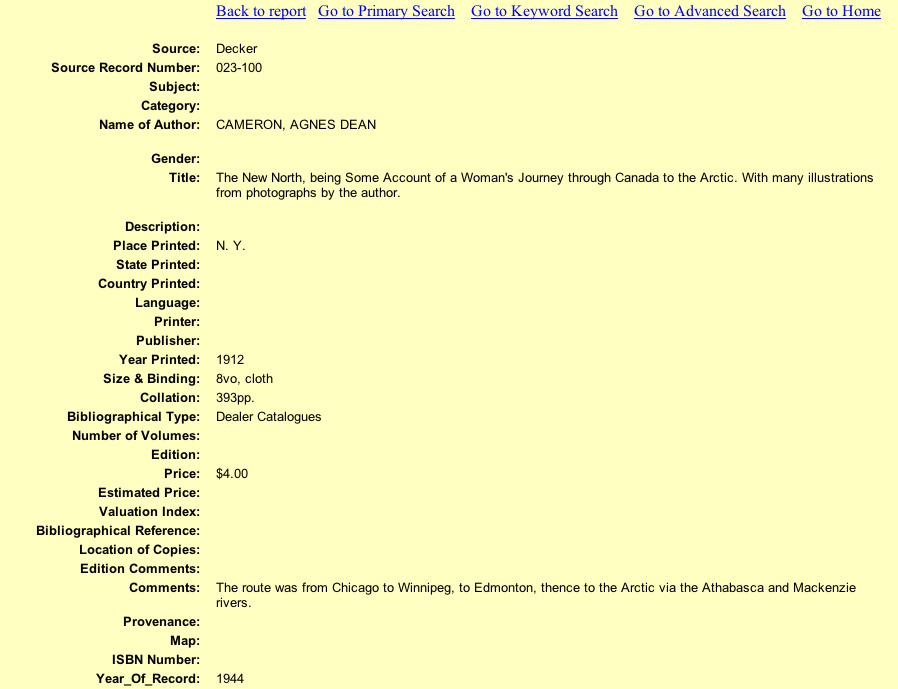Using Library Research Methods And Catalogs As A Supplement To AED And Book Collecting
- by Julie Carleton

The New North, being Some Account of a Woman's Journey through Canada to the Arctic. Æ Database: Decker023-100
Subject
Searching by subject is handy if you want to know the exact subject heading a library is going to use. For example, if I wanted to find a subject term, I could look up the title, New North, being Some Account of a Woman's Journey through Canada to the Arctic and see the subjects that were applied: Northwest Canadian--Description and Travel. Then, I could go to the Subject Browse and plug in Northwest Canadian--Description and Travel to see if there are any other similar books written by women. When I enter in the phrase “women’s travel narratives” I get an alphabetical list of 25 related subject headings. Browsing through the list, I see several possible subject headings, including the heading “Women Travelers--North America," “Women Travelers--West--(U.S.)," “Women Travelers--West--(U.S.) History--19th Century” and “Women Travelers--Rocky Mountains--Biography." From here, each subject heading is linked to records that contain that particular subject heading.
Keyword
Keyword searching is good when you don’t have an idea of a specific title or subject heading, but you first want to see if there is anything under specific phrase in title, subject or author. Since the keyword search will look through each field in the entire database, the results will inevitably be huge if you use vague terminology. For the purposes of title, author and subject searching, I would recommend that you stick to those types of searches,. If I wanted to do a keyword search, for instance, on Western travel written by women, I would enter the query "overland + travel + wom?." The question mark is the truncation symbol used for the Library of Congress Catalog. This brings me about 9,000 records. In order to narrow things down, I run a more specific query: "+ lady + California + travel." I also have the option to set limits to the search. So, I decide to add the date span of 1820-1920 in order to narrow down results. The final result here is 166 records, which is a much more manageable number. As you can see, the upside with keyword searches is that you will get results; the downside is that if you are not specific enough, you will get more results than you can count.
Coming Back Home With The Goods: How To Use The ÆD To Get The Most Bang For Your Buck
So, how is all of this information going to help me on the Æ Database, you ask? Well, there are several ways that you can use these tools to supplement your ÆD searching. For one, now you have a more complete listing of author names. For example, after running a search on the Library of Congress database, I have a couple of different ways to look up Mrs. Henry Beck in the Æ Database -- I know that she can be either Mrs. Henry Harrison Beck or Mrs. Henry Beck. I also know that she does not “officially” have a first name that I should also use when searching for her in the ÆD. Another way the library catalog footwork is helpful is that you can now take your list of titles that you had found on theÆD and look them up in library catalogs to determine what their "official" subject headings are.